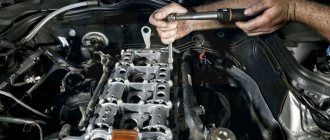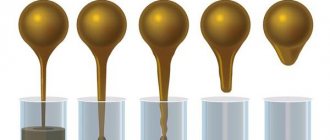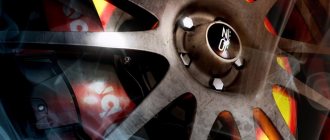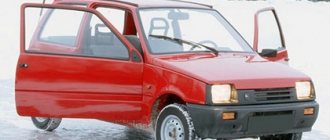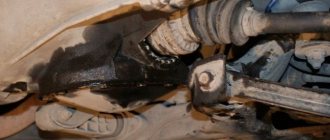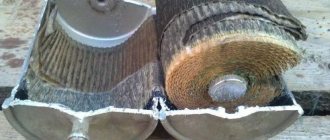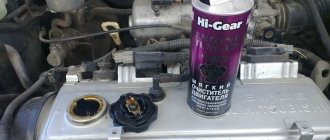Any car deteriorates and wears out over time, and this applies not only to the body or interior elements. Much more trouble for car owners is caused by malfunctions of the engine and other vehicle systems that arise as a result of long-term use of the vehicle.
Sooner or later, every driver is faced with the need to overhaul the power unit, which involves replacing most of the components of the cylinder-piston group and the crank mechanism. The result is an engine that has been updated almost to its original condition, which at first must be run in in the same way as a completely new car.
Of course, there are some differences, and we will definitely talk about them in our review.
Why is the engine broken in?
Engine repair, even if carried out using expensive equipment, cannot be compared with factory production, therefore, the treated surfaces almost always have microscopic irregularities and deviations from the ideal geometry. Therefore, grinding in the power unit is necessary to ensure that such extremely minor defects (typical, by the way, for new engines) do not develop into significant ones. And the risk of more serious troubles increases many times over if the car is not operated in a gentle manner at first.
Until the rubbing parts have worked in, the motor should not be allowed to overheat - this can lead to further deformation of the motor elements. Running in the engine after the overhaul assumes that the car owner will drive at the recommended speed limit for approximately 3 thousand kilometers after the overhaul. However, complete grinding of the rubbing surfaces, in which all irregularities are smoothed out, occurs, as practice shows, after driving 10,000-15,000 kilometers. Over the specified period of time, the likelihood of significant scoring, as well as melting of rubbing parts, is significantly reduced.
Approximate recommendations for drivers are to drive during break-in at 60% of normal loads. Please note that this is an indicative figure, since the driving style of different drivers may vary significantly.
Regardless of whether the engine parts were processed using a homemade method, or new factory-made components were installed, running-in is indispensable, and here’s why:
- You assemble the engine yourself or at a service station. There is no need to talk about maintaining precise tolerances for obvious reasons;
- since you are not replacing the entire engine, there are always old components and parts that, due to natural wear and tear, will no longer correspond to the new ones;
- Since new parts are produced using cutting tools, even after finishing there are always at least areas that do not fully match the original geometry.
What not to do when breaking in
The battery must only be fully charged. This is due to the fact that at the first start, a lot of force is required to turn the crankshaft. When filling engine oil, air pockets must not be allowed, otherwise the internal combustion engine will experience oil starvation. You should not fill the oil above or below the required level, since exceeding the volume will certainly cause leakage, and reducing it will lead to the same oil starvation. If the oil pressure is insufficient, the engine is turned off and then restarted.
When starting for the first time, do not accelerate. Leakage of any types of technical fluids is unacceptable. Immediately after purchasing a car, it is not recommended to drive on bumpy roads. You should also avoid steep climbs. At this time, you don’t need to drive at high speeds - you need to spare the engine and not let it overwork while its parts have not yet had time to break in.
First start of the power unit
Assembling the motor is an extremely important stage. Any mistake can have very serious negative consequences. The first start of the engine after repair work is no less important. We can say that following the correct sequence of actions largely determines how successful the subsequent running-in of the engine will be.
Here is the algorithm for the first engine start after a major overhaul:
- make sure that the battery is fully charged - due to the presence of micro-irregularities, all its power may be needed to turn the crankshaft;
- Great importance should be given to engine oil: it must not only correspond to that recommended for a given engine, but also be of high quality. Filling the MM should be carried out to the upper limit mark of the dipstick - after 15 minutes, some of the oil will drain into the pan, and it may need to be topped up, but this time not reaching the MAX mark. It is not recommended to pour lubricating fluid into the oil filter - inept performance of this operation can lead to the formation of an air plug in the oil line;
- for diesel and carburetor power units, fuel must be supplied to the system manually;
- If all preparatory manipulations have been completed, you can start starting the engine. In this case, be sure to check the oil pressure lamp. Compared to a normal start, it should burn a few seconds longer, but if after 5-7 seconds it does not go out, you should immediately turn off the engine and begin to find out the reason why the oil pressure was not brought back to normal;
- When starting the engine with the starter, do not help it with the accelerator - the increased load here is not only inappropriate, but unacceptable. But the depressed clutch will come in handy;
- If the light goes out, you should warm up the engine to 85-92°C at idle speed, without gases. While the engine is warming up, you can look into the engine compartment and under the car to make sure there are no leaks of technical fluids, including oil and antifreeze. Remember that the appearance of a burning smell during the first start-up after capitalization is normal; this is the result of burnout of lubricants applied during engine assembly. After the power unit reaches operating temperatures, there will be a slight drop in the MM pressure in the system, as the hot liquid becomes more liquid. Acceptable pressure is considered to be in the range of 0.4-0.85 kg/cm2. If it is less, it means that there are problems that arose either as a result of assembly errors or due to the use of low-quality lubricating fluid;
- After warming up, the engine must be turned off and started back only after it has cooled to 40 degrees. About one and a half dozen such engine start/stop cycles should be carried out, after which you can let the engine run at higher speeds (for the first three minutes - at a thousand rpm, then for four to five minutes - at one and a half thousand rpm, after which Let the engine run at 2 thousand rpm for 5 minutes).
Changing the oil after engine overhaul
It should be understood that the obligatory result of grinding in parts (especially in the first hundreds of kilometers) in the engine is metal shavings. These chips enter the engine oil and accumulate in the oil filter. It is quite obvious that these chips need to be removed from the internal combustion engine.
This can be done by draining the lubricant and replacing the filter. This replacement needs to be done after 800-1000 km. By the way, you only need to fill it with suitable high-quality motor oil immediately after repairing the engine, before the first start, during the first replacement and further during operation.
This means that you need to use the material recommended by the engine manufacturer. The lubricant must comply with all API and ACE standards, requirements and tolerances, and also be suitable for SAE viscosity, taking into account seasonality and other regional characteristics.
It is also necessary to separately take into account that after boring the cylinder block to repair dimensions for repair pistons, in some cases experts recommend using a more viscous oil compared to that which is poured into a similar new engine.
Duration and features of engine running-in after capitalization
The most important period for a rebuilt engine is the first three thousand kilometers. During this period, it is extremely important to strictly follow the recommended driving regime, especially until the vehicle reaches a thousand kilometers. We list the general rules for running in:
- Driving at high speeds is unacceptable; driving at low speeds relative to the nominal speed is also undesirable;
- a gentle driving mode does not mean that you should move at a constant speed and speed - the driving rhythm needs to be changed, but within acceptable limits;
- Loading the car for the break-in period, much less using a trailer, is extremely undesirable;
- You should avoid sudden acceleration/braking and completely abandon the habit of engine braking.
Strictly speaking, running-in does not allow even short-term operation of the engine in heavy conditions. You should always start with very moderate loads, gradually increasing them. Long-term operation at idle is undesirable (only to warm up the power unit), since idling for a car is also considered a difficult and difficult mode.
As with a new car, the engine oil should be changed after driving the first thousand kilometers. In this case, engine flushing is unacceptable, as is the use of all kinds of additives and additives.
Let's consider the features of running in the power unit, depending on the scope of work carried out as part of a major overhaul. Recovery can be complete or partial. A complete reconstruction of the engine assumes that work has been carried out affecting all the main engine systems: CPG, crankshaft, timing belt. In this case, the recommended run-in mileage is at least 3,000 kilometers. Partial repairs involve the replacement and restoration of individual engine components (piston rings, camshaft, valves), and in most cases, to grind in the parts, it is enough to drive a thousand kilometers in a gentle mode.
Since a complete “capital” is more common, we provide recommendations for running-in specifically for this case:
- before setting off on the road, you should warm up the power unit at idle, but not for too long (we have already said that this is harmful) - it will warm up to operating temperature while driving;
- It is advisable to plan your route in such a way as to minimize travel on steep slopes. During the run-in period, passengers are not welcome in the cabin;
- engine braking, quick acceleration and emergency braking are unacceptable;
- The recommended driving speed is 60 km/h, regardless of the type and power of the engine. In this case, the speed should be kept below 2500 rpm and dropped for a long time below 1500 rpm. Beware of the operation of the power unit in tension;
- A common mistake is the desire to drive in one gear, maintaining a constant speed. The dosage of load on the motor should be smooth, deceleration/acceleration should be present, but the speed should always correspond to the selected gear. In this case, the engine operates at average speed for this mode.
Moderate driving in all senses during break-in provides the piston rings with the opportunity to settle, settle more comfortably in their places - the piston grooves, the surface of the cylinders gradually acquires a mirror cleanliness, etc. That is, real driving allows you to smooth out all those inaccuracies that cannot be eliminated during grinding, even with the most modern equipment.
We also note that the specified break-in period of 3,000 kilometers is considered the minimum required for a complete overhaul, while complete grinding in of the moving elements of modern internal combustion engines occurs after driving 7,000-10,000 kilometers. In other words, the light running-in mode should last much longer. Maximum loads are permissible only after the above segment.
Running in a diesel car
There are no big differences in the running-in procedure for gasoline and diesel cars. To reduce friction in the engine, there is a lubrication system. The oil pump pumps up the required pressure, which drives engine oil through the oil channels and rubbing parts. A film of oil is created between them, popularly called an oil wedge.
It is necessary to carry out the diesel engine break-in procedure with an emphasis on the optimal pressure created in the lubrication system and at the same time minimizing the load. Effective pressure is considered when the crankshaft rotation speed is 1300 rpm. Travel at lower engine speeds is not recommended.
- The mileage of the first 1000 km is the most critical when running in a diesel engine.
- Before driving, warm up the engine to 30 degrees. Next, the diesel itself will warm up while driving.
- You should not engage a gear higher than second with a manual transmission. On an automatic transmission, it is better to block the transition beyond the second gear.
- Engine speed must be maintained within 1500 rpm.
- After warming up, you can increase the speed, but not higher than 4th gear. When running in, do not overload the engine.
- It is better to test the car outside the city, since you will not need to stand at traffic lights and brake frequently.
- When driving on a straight road, you can engage fourth gear and move at a speed not exceeding 80 km per hour. When climbing, it is better to switch to a lower gear.
It is recommended to stop at least 2 times during one trip and turn off the engine, allow it to cool, check the oil and coolant levels. If possible, check the oil in the automatic transmission. After checking the oil, do not close the hood yet, start the engine and listen to the sound of its operation, test the operation of the electrical equipment. Such checks must be carried out before a mileage of 1000 km.
This is the lowest mileage for running a diesel engine. At this time, you must strictly follow all the rules. Then you can gradually increase the load. Qualified experts express the opinion that the best mileage for running in a diesel and gasoline engine is 10 thousand km. Although some craftsmen claim that the process of grinding in parts ends only after a mileage of 30 thousand km.
Methods for running in the engine
The algorithm described above is a classic natural run-in. But besides this, there are at least three more ways to grind in parts of a restored power unit:
- cold rolling method, performed using a special stand;
- cold running, performed without a stand;
- method of hot lapping of engine parts.
Let's consider the features of each of the listed methods.
Run-in on the stand
Of course, the stand itself is very expensive equipment. Only large service stations can afford it, but thanks to its use it is possible to gain complete control over all technological stages of running-in.
In this case, the power unit is installed on a stand and started by connecting to the driveshaft, which, in turn, is driven by an electric motor, which is considered to be leading in relation to the car engine.
A special device called an encoder controls the rotation speed of the drive engine, while the tachometer records slightly less accurate readings. The bench equipment operates under the control of a microprogram that regulates the operating parameters of the electric motor, based on sensor readings.
The total duration of operation of the driving/driven motor pair is determined by the scope of work performed as part of the vehicle's overhaul. In particular, normal grinding in of a new cylinder-piston group requires approximately three hours of continuous rotation of both engines.
The result of such cold grinding suggests that the following indicators were achieved:
- when the SA operates at idle (at speeds not exceeding 600 per minute), the speed stabilizes;
- pressing the accelerator pedal in the same mode does not lead to interruptions in the operation of the lead engine, and it should not stall.
Overhaul process
Disassembly is a troublesome job that requires special skills and the availability of special keys and pullers. To carry out the work, you can use the services of service centers or do everything yourself.
Engine restoration stages:
- Dismantling the power unit. Removal begins with unscrewing the fasteners on the frame and disconnecting the wiring and pipelines from all internal combustion engine components.
- Inspect the component for damage or wear. The obtained data is verified with technical documentation. Based on the measurement results, the need for repairs is determined.
The degree of wear of the cylinder-piston group is determined by the amount of compression. Measurements are taken through the nozzle hole, cranking the engine with the starter.
Parameters under which repairs are necessary
| Limit data for the state of the CPG kgf/cm2 | |
| total vacuum value in the cylinder | value of residual vacuum in the cylinder |
| 0, 78 | 0, 25 |
| Piston ring wear parameters kgf/cm2 | |
| 0, 78 | 0, 25 |
| Cylinder liner wear indicators kgf/cm2 | |
| 0, 66–0, 78 | |
| Parameters that indicate valve wear, loose seating, mechanical damage to the valve base or piston | |
| 0, 65 | |
- Defective component:
- crankshaft: grinding the main and connecting rod journals, checking the journals for hardness, measuring runout, alignment, installing liners in accordance with the repair size;
- cylinder block: boring to repair size, abrasive treatment of the cylinder surface, restoration of the mating plane and crankshaft installation location;
- oil pan: visual inspection for mechanical damage;
- cylinder head: removing carbon deposits from the combustion chamber, replacing guide bushings, grinding valves and seats, troubleshooting the camshaft, adjusting valve operation;
- fuel system: setting the timing and injection pressure on the fuel pump, checking the quality of the injector spray, inspecting the fuel line seats for wear or damage.
Overhaul of diesel engines ends with running-in.
What not to do
We have partially mentioned what it is extremely undesirable to do; for better remembering, we present a list of prohibited actions in full:
- you cannot increase the speed above 2000 rpm;
- Sharp acceleration/braking, especially by the engine, is unacceptable;
- the run-in should be carried out in a lightweight version, without passengers and cargo;
- It is forbidden to engage direct gear, or to drive in a lower gear for a long time. The speed limit should be varied, which will have a positive effect on fuel consumption and the smooth running of the car;
- You should not run-in on busy highways, both in the city and outside it - in this case you will not be able to comply with the recommended regime. The ideal place is a deserted highway, the ideal time is evening or early morning.
During the first start-up, it is advisable to listen to the operation of the power unit in order to identify extraneous sounds that may indicate problems in the operation of the restored engine.
Signs of the need for major repairs
There are a number of indicators that will indicate the need for the procedure:
- increased fuel consumption;
- a significant decrease in the engine oil level;
- smoking from the gas and vapor exhaust hose;
- removal of exhaust gases of different shades. For an experienced technician, the shade is an indicator of determining the cause of the malfunction;
- interruptions in engine operation at idle;
- extraneous sounds in the exhaust gas removal mechanism;
- low oil pressure;
- unstable operation of the power unit, overheating;
- the appearance of extraneous sounds in the internal combustion engine;
- reduction in power indicators.
A very important indicator for carrying out major work is the mileage of the vehicle. Typically, a diesel engine overhaul is carried out after traveling 200 - 250 thousand km. But the mileage varies depending on the model and operating conditions of the vehicle.
Repair frequency table
| Vehicle type | Mileage before major repairs, thousand km |
| Cars | |
| With a cubic capacity from 1.2 to 1.8 liters. | 150 |
| With a power of 1.8 - 3.5 liters. | 400 |
| Bus class | |
| especially small, with a length of up to 5.0 m | 350 |
| Length from 6 to 7.5 m. | 400 |
| Length 8 - 9.5 m. | 500 |
| Large, with a length of 10.5 to 12 m. | 500 |
| General purpose trucks | |
| load capacity up to 1.0t | 150 |
| load capacity up to 3.0t | 175 |
| load capacity up to 5.0t | 300 |
| Large load capacity | |
| from 5.0 to 6.0t | 450 |
| from 6.0 to 8.0t | 300 |
| Extra large load capacity | |
| from 8.0 to 10.0t | 300 |
| from 10.0 to 16.0t | 300 |
| Quarry transport | 200 |
Hot running of diesel engines under load
The start of diesel engines must be carried out by the electric motor of the running-brake stand. Hot running of diesel engines under load should be carried out for 30 minutes in the modes given in the table:
| Table. Diesel hot running modes Crankshaft rotation speed p, min 1 | Load P, N, according to the readings of the weighing mechanism of the stand | Duration, min |
| 1600 | 50 | 10 |
| 1800 | 120 | 5 |
| 2000 | 30 | 5 |
| 2 200 | 320 | 10 |
During the running-in process, it is necessary to monitor the oil pressure in the diesel lubrication system using the pressure gauge readings, which on a diesel engine heated to a temperature of 75 ... 95 ° C should be 0.25 ... 0.35 MPa at the rated crankshaft speed and not less than 0.08 MPa ( at minimum speed). Oil pressure should be adjusted using the oil filter drain valve adjustment plug.
Light smoking of a heated diesel engine is not a rejection sign if, when the diesel engine is running for 5 minutes after removing the load, no oil emission is observed in the exhaust pipe. During the hot running process, oil, coolant and diesel fuel are not allowed to leak or drip through the gaskets and threaded connections of the manifold; release of gases from under the exhaust manifold flanges and through the cylinder head gasket; extraneous knocks and noises in diesel mechanisms. At the end of the hot running-in of diesel engines, the maximum crankshaft rotation speed should be no more than 2600 min-1, and the minimum - no more than 800 min-1. Diesel malfunctions discovered during hot running-in must be eliminated.
The diesel engine must be re-run-in and fully tested when replacing at least one of the following parts: crankshaft, piston, cylinder liner, piston rings. When replacing a set of main or connecting rod bearings, the diesel engine is subjected to repeated hot running under load.
Before the start
When releasing a new car, the manufacturer could pour “mineral water” or “semi-synthetic” into the engine. The same should be used during break-in. Do you want to remove the coating layer in the cylinders? Then you can immediately fill in synthetics, “hydrocracking” and the like.
Viscosity of “synthetic” and “mineral” at 100 C
If the pressure is reduced, the running-in is stopped immediately. By the way, before the start you can check the oil level on the dipstick.
The lamp with the “oil can” should go out 5-6 seconds after starting the engine.
